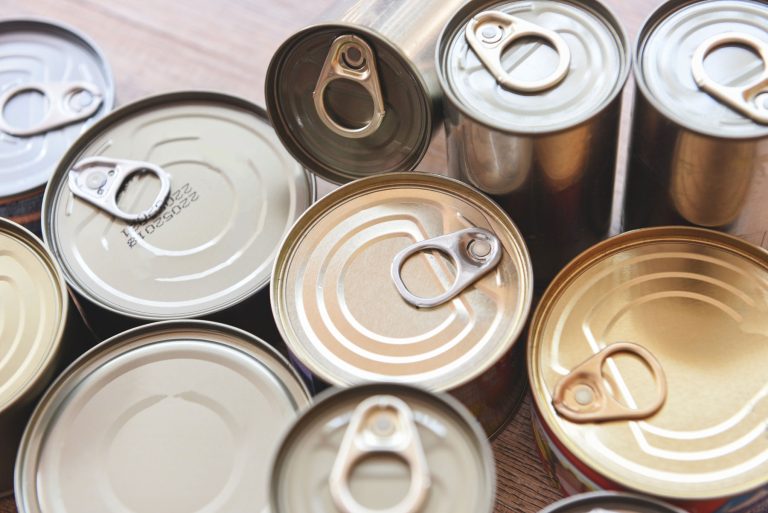You can’t build Canada without Steel
Did you know that most of the cans in your pantry right now are made of steel? It’s true! While we may call the metal cylinders that hold our soups, tomatoes, beans, and juices “tin cans,” the truth is that they are actually made of a steel product called tinplate.
Tinplate—and other Tin Mill Products like electro-chromium-coated steel—uses thin layers of tin applied to rolled steel sheets in Canadian steel mills, before being cut, folded, and welded into the familiar shapes we see on our shelves and in our grocery stores.
This means that steel is essential for Canada’s food security. While Canadian farmers grow excellent and healthy products to feed Canadians, steel cans are required to preserve those foods, to keep them fresh throughout the year, and ready for when we need them most.
Why We Need Cans
When disaster strikes—when wildfires rage across Alberta and the British Columbia interior, or when hurricanes flood the Maritime provinces—canned food offers safety, health, and dependable nutrition for people in disaster zones. Along with bottled water, canned foods are the first items shipped into disaster zones and relief areas across Canada and around the globe.
Canned goods are durable and effective: they extend the shelf-life of products by years, not months; and while they may dent, they rarely break. Canned goods allow Canadians to access Canadian-grown fruits and vegetables all throughout the year; they support farmers, too!
More than that, steel cans are safe. According to the Can Manufacturers Institute (CMI), there hasn’t been a single reported incident of foodborne illness from the failure of metal packaging in over 40 years.
Put this all together, and tinplate steel cans are exactly what Canadians need.
Recycling and Sustainability
In a world of plastics and styrofoam food packaging, tinplate steel cans offer a better, more sustainable alternative. The simplicity of steel cans makes them easier to recycle for everyone: producer, recycler, and consumer.
Consumers have no doubts on whether or not steel cans can be recycled: a higher percentage (58%) of steel cans are recycled—more than plastic (13%) and glass (34%) containers combined!
This ensures recycled materials are always available for new cans. As more recycled steel becomes available, the carbon cost of making steel cans goes down.
Reforging Canadian Food Security
While Canada used to make its own tinplate steel cans, today the vast majority of cans we see in our grocery stores are imported from the United States—even the ones using Canadian tinplate steel!
This means that Canadians cannot “Buy Canadian” when it comes to groceries. If Canadians want food security, and a fully-Canadian food network, then we need to bring back Canadian steel can manufacturers.
In the case of Canadian tinplate steel, the lack of Canadian manufacturers means that material crosses the border twice—racking up tariffs on both trips, as a raw material and as a finished can. This increases food prices for Canadians and contributes to the escalating grocery costs that we experience.
We can no longer afford to kick the can down the road: bringing tinplate steel can manufacturing back to Canada just makes dollars and sense! If food security is truly a priority for Canadians and our government, then we need to support Canadian manufacturers as well as our farmers.
To learn more about how steel builds Canada, visit dofasco.arcelormittal.com



